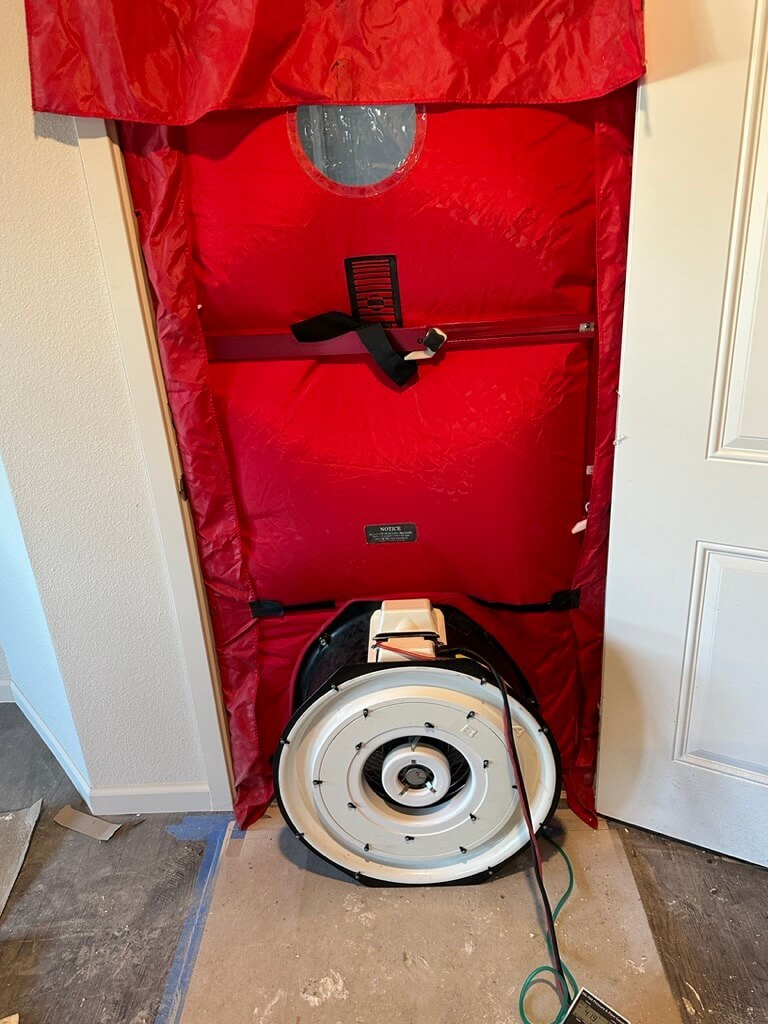
Building Envelope & Energy Efficiency Topics
Blower Door, Duct Testing & Energy Audits
Home Ventilation
Range Hood / Microwave Duct sizing and the proper size of ductwork for your new Vent Hood are very important to ensure that your Microwave or Vent Hood is efficient and quiet.
The diameter of your Ductwork is the single most important consideration. Here are some guidelines based on your Vent Hood CFM. Now please note that we will use the most commonly available sizes of Ductwork for our recommendations and that in many remodel applications for older homes there is an existing 4” Duct which in some cases is the only option other than a recirculating hood. We always recommend venting outside over recirculating even if you must adapt to an existing smaller duct size than is recommended. If you have any questions please call us or contact your local HVAC professional.
The recommendations for Range Hood Ductwork Size are suggestions. After you consider the size of your Ductwork the next most important factor is the “Run”. How long is the ductwork and how hard will the Range Hood Blower have to “push” the exhaust air to get it out of ductwork? Always follow the manufacturer installation requirements for any installation.
Microwave units also state in the manufacturer specs that a minimum of 6" round should be used or 3 1/4" x 10" rectangular
Next to Ductwork Size, the Length is the most important consideration. In some cases even if you are dramatically undersized you can still exhaust the cooking air efficiently if you have a very short run of ductwork. Here are the necessary things to consider in the ductwork size and design assessment.
First, Shorter is always better, and the straighter the better. Finally, Upward for hot air is always the best way to go, and remember, hot air rises, so if you have to choose between a 30’ run with 2 elbows out the side wall or a 40-50’ run straight up with no elbows these will be about the same in static pressure at the exhaust point. Every time you change direction you add a small amount of resistance to the air pressure increasing the needed pressure required to move the air along the length of the total discharge ducting system. Most industry standards for deduction in the length of each elbow or 90-degree change in direction is 10’. So a 20’ run with 3 elbows would be equal to a 50’ straight run.
When your windows are sweating you need to listen! Your mechanical ventilation system has failed! or has it? There are many reasons windows can sweat, call our experts for an in-home inspection and learn from our Pros what your home has been trying to tell you. We speak house!
Customer “Kent” living in an older apartment/condo in Seattle. Has an existing 4” Duct that goes up the wall, turns a corner, crosses the ceiling about 15’ then exits the side of the building. The customer wants to know if he can hook up a 600 CFM Range Hood. Should he just switch to Recirculating? The customer cannot afford and does not want to disturb the existing ductwork.
Our suggestion is to connect the range hood to the existing 4” ductwork versus using the Range Hood in the Recirculating settings mode. Here is why, this Range Hood was a 4-speed Vent Hood. On the lowest 2 speeds, 240 CFM and 360 CFM a 4” Duct is large enough. However, on the 3rd and 4th speeds the pressure inside the ductwork would increase and the blower would have to work a little harder to push the air. Yes, if this customer chooses to run this Range Hood on the highest speed every day then the additional air pressure will reduce the usable life of the motor. But in most real-life situations, the range hood can be installed and hooked up to the existing ductwork yet the customer should understand the limitations and the trade-offs of this type of install. Another concern is when the owner sells the home the venting may get called out as a deficiency during the home inspection due to venting pipe size.
Customer “Homles” lives in Bellevue, WA, and is building a new home. He is venting over a 48” Wolf Range and plans to cook all the time. In fact, when he and his wife entertain, they enjoy cooking together and will have the cooktop on for hours. They want to make sure the Range Hood Ductwork is sized correctly during the renovation and he wants the Range Hood Blower motor in the attic of the home. The BTUs for his Cooktop are a Maximum of 77,500 and they plan to use the indoor grill that is part of the cooktop.
A minimum Ductwork Size of 10” in diameter and 12” if the ductwork extends more than 100’. Also, do not forget to include the 10’ deduction for each elbow on the venting run. They will use a 1200 CFM rooftop blower with controls at the range hood. The 10’ size will accommodate every speed except at the highest speed it may require the blower to work a little harder.